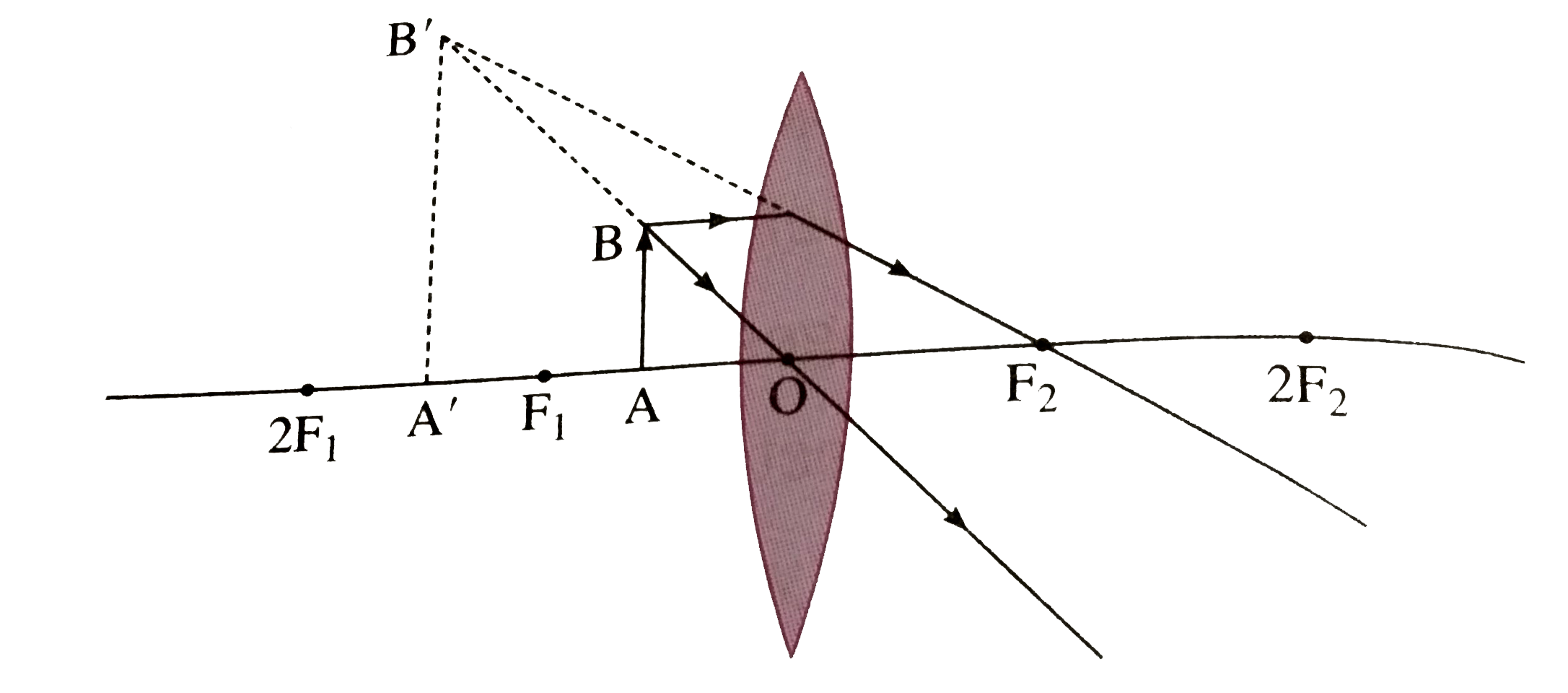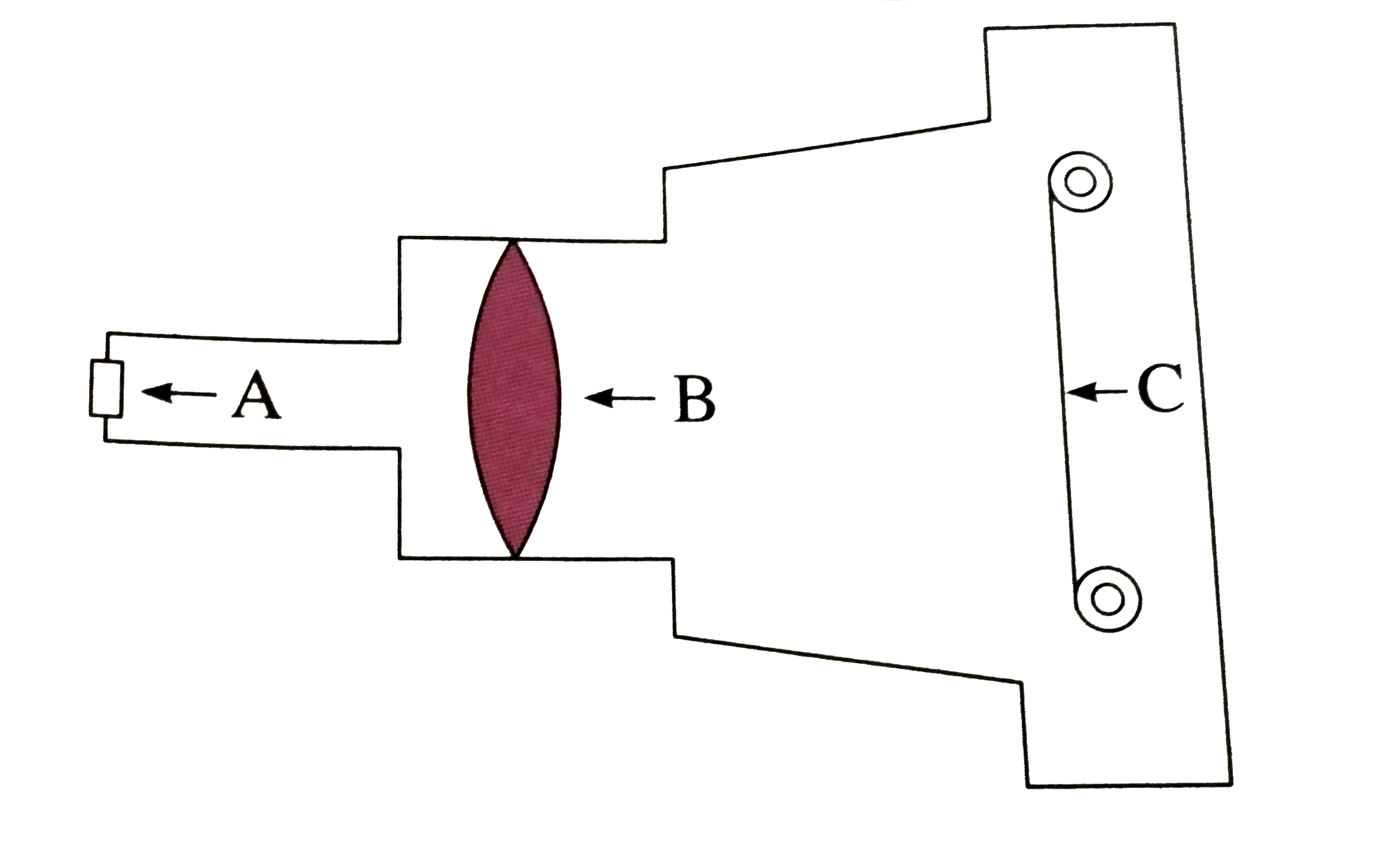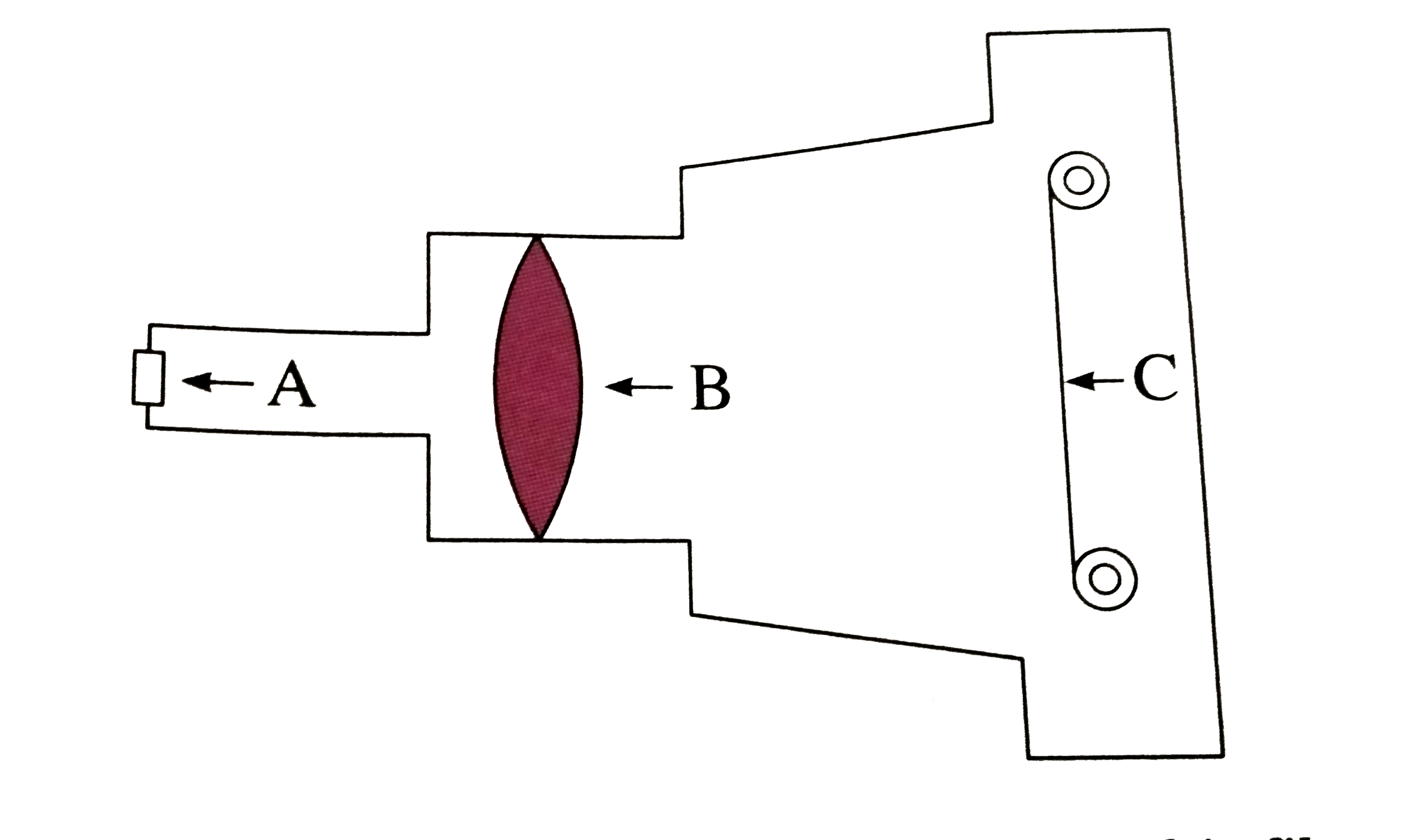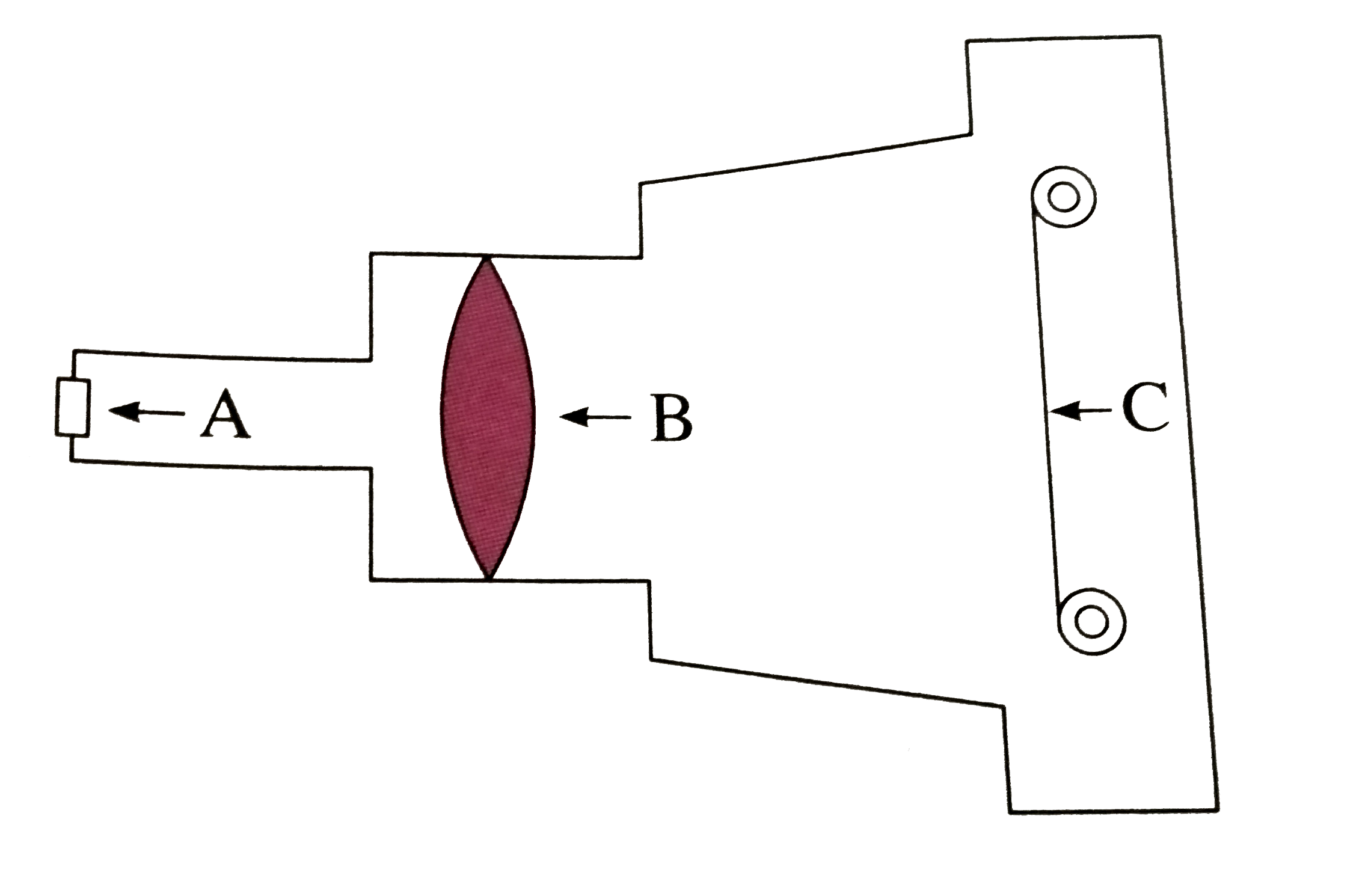Complete Solutions to Answer the following questions : of chapter LENSES of Class 10 book with complete answers and questions
| Class 10 | PHYSICS |
| Chapter | LENSES |
| NAVNEET PUBLICATION DIGEST | Answer the following questions : |
| Number Of Questions | 100 |
| Academic Year | 2023-24 |
What is a lens ?
02:17View SolutionIn which instruments have you seen a lens ?
02:34View SolutionHow is a lens different from a mirror ?
04:56View SolutionMake a list of optical devices you know.
04:07View SolutionDo you know which is the natural optical device ?
01:59View SolutionWhat is a convex lens ?
02:09View SolutionWhat is a concave lens ?
01:52View SolutionDraw neat labelled diagrams : Type of lenses.
03:36View SolutionIn general, when a ray of light pasess through a lens, there occurs a change in its direction of propagation . Why ?
03:35View SolutionWith reference to spherical lenses, state the meaning of the following terms or define the following terms and draw the diagrams to illustrate the same : (1) centre of curvature (C) (2) radii of curvature `(R_(1),R_(2))` (3) principal axis (4) optical centre (O) (5) principal focus (F) (6) focal length (f)
07:05View SolutionState the rules used for drawing ray diagrams for the fomation of an image by a convex lens .
04:26View SolutionIn the case of a convex lens, show the path of the refraction ray when the incident ray of light (1) is parallel to the principal axis of the lens (2) passes through the focus of the lens (3) passes through the optical centre of the lens.
03:28View SolutionDraw neat and well labelled ray diagrams for image formation by a convex lens when an object is at infinity.
Also state the position , nature and size of the image relative to that of the object.03:28View SolutionDraw neat and well labelled ray diagrams for image formation by a convex lens when an object is beyond `2F_(1)`
Also state the position , nature and size of the image relative to that of the object.02:41View SolutionDraw neat and well labelled ray diagrams for image formation by a convex lens when an object is at `2F_(1)` .
Also state the position , nature and size of the image relative to that of the object.02:43View SolutionDraw neat and well labelled ray diagrams for image formation by a convex lens when an object is between `F_(1) and 2F_(1)`
Also state the position , nature and size of the image relative to that of the object.03:06View SolutionDraw neat and well labelled ray diagrams for image formation by a convex lens when an object is at focus `F_(1)`
Also state the position , nature and size of the image relative to that of the object.02:44View SolutionDraw neat and well labelled ray diagrams for image formation by a convex lens when an object is between focus `F_(1)` and optical centre O.
Also state the position , nature and size of the image relative to that of the object.02:25View SolutionObserve the following figure and complete the table :
 02:02View Solution
02:02View SolutionAt which position will you keep an object in front of a convex lens to get a real image smaller than the object ? Draw a figure.
03:26View SolutionAt which position will you keep an object in front of a convex lens to get a real image of the same size as the object ? Draw a figure .
02:02View SolutionState the rules used fro drawing ray diagrams for the formation of an image by a concave lens.
05:32View SolutionState the characteristics of an image formed by a concave lens.
02:10View SolutionIn the case of image formation by a concave lens , what can you say about the position, nature and size of the image relative to the size of the object ?
03:41View SolutionDraw a ray diagram to show image formation by a concave lens.
03:15View SolutionState the Cartesian sign convention for refraction of light (image formation ) by a lens.
04:01View SolutionWhat is a lens formula ? State it.
01:56View SolutionWhat is meant by the magnification produced by a lens State the formulae for it.
02:08View SolutionExpress the magnification produced by a lens in terms of the local length of the lens and (1) the object distance (2) The image distance.
02:44View SolutionAn object is kept in front of a lens of focal length +10 cm. Describe the nature of the image in the object distance is 25 cm.
02:04View SolutionAn object is kept in front of a lens of focal length +10 cm. Describe the nature of the image in the object distance is 5 cm.
02:11View SolutionAnnu and Anand have concave and convex lenses respectively. They took lenses in sunlight and tried to burn two pieces of paper of equal areas and temperature . State which lens will burn the paper. Give the reason. Explain with the help of a diagram, why the other paper did not burn.
03:57View SolutionTo obtain a magnified real image of a small film strip, which type of lens is used ? Where is the film strip placed to obtain the image on the screen ?
03:17View SolutionWhen an object of height 2 cm is placed in front of a convex lens, the height of the image is found to be 3 cm. State the nature and position of the image giving reason.
04:49View SolutionYou are given a lens which gives a virtual , erect and enlarged image. What type of lens is it ?
02:40View SolutionWhen an object of height 3 cm is placed in front of a concave lens, the height of the image is found to be 6 cm, State , giving the reason, whether the given statement is true and false.
01:28View SolutionState used of a convex lens.
01:44View SolutionState used of a convex lens.
01:44View SolutionAn object is kept in front of a lens of focal length-20 cm . Describe the nature of the image when the object distance is 25 cm.
03:46View SolutionAn object is placed in front of a convex lens of focal length 20 cm . If the object distance is changed from 60 cm to 40 cm , what can you say about the size of the image relative to that of the object ?
05:24View SolutionWhat is the power of a lens ?
02:57View SolutionWhat is the unit of power of a lens ?
Define it .02:41View SolutionWhat is the sign of the power of (i) a convex lens (ii) a concave lens ?
02:11View SolutionIf there is an increase or decrease in the focal length of a lens, what will be the effect on the power of the lens ?
01:32View SolutionIf two lenses of focal lengths `f_(1) and f_(2)` are kept in contact with each other, state the formula for the focal length of the combination . If `P_(1)` and `P_(2)` are the powers of these lenses, state the formula for the power of the combination.
01:45View SolutionDraw a neat labelled diagram to show the structure of the human eye.
04:55View SolutionWhat is cornea ?
01:48View SolutionWhat is iris ?
02:11View SolutionWhat is pupil ?
03:17View SolutionWhat is the function of the lens in the human eye ?
01:21View SolutionWith reference to the functioning of the pupil in the human eye, what is adaptation ?
03:51View SolutionWhat is the shape and the size of the human eyeball ?
01:32View SolutionName the part of the human eye that forms a transparent bulge on the surface of the eyeball.
01:46View SolutionWhich part of the human eye is located just behind the pupil ?
01:20View SolutionWhat is retina ?
03:18View SolutionWhat is the nature of the eye lens and what does the eye lens do ?
03:39View SolutionWhat happens when light falls on the retina ?
02:47View SolutionWhat are ciliary muscles ?
03:57View SolutionWhat is the focal length of the eye lens of a normal eye in relaxed position of eye muscles ?
01:36View SolutionWhere does the second focal point of the eye lens of a normal eye in relaxed position of eye muscles lie ?
02:06View SolutionWhat is meant by the power of accommodation of the eye ?
04:51View SolutionDefine the term "power of accommodation" of human eye.
View SolutionWhat is meant by the power of accommodation of the eye ?
04:51View SolutionWhat is meant by power of accommodation ? How is it brought about ?
04:54View SolutionWhat is the function of the iris and the muscles connected to the lens in the human eye ?
04:49View SolutionThe human eye is very similar to a photographic camera. The figure given shows the main parts of a photographic camera , Now answer the question.

Name the parts of the human eye similar to the followign parts of the photographic camera:
(a) Photographic film (b) Aperture.01:45View SolutionThe human eye is very similar to a photographic camera. The figure given shows the main parts of a photographic camera , Now answer the question.

State one difference between the human eye lens and camera lens01:59View SolutionThe human eye is very similar to a photographic camera. The figure given shows the main parts of a photographic camera , Now answer the question.

Name the muscles which adjust the curvature of the eye lens.01:45View SolutionThe human eye is very similar to a photographic camera. The figure given shows the main parts of a photographic camera , Now answer the question.

Which phenomenon of light is responsible for the working of the eye ?01:41View SolutionHave you seen a photographic camera in which a film is used ? Compare the human eye with it. Ste similarities between them. State the points of difference between them.
03:49View SolutionWhat is meant by the minimum distance of distinct vision ?
04:11View SolutionExplain the term minimum distance of distinct vision.
02:48View SolutionWrite a short note on distance of distinct vision.
03:07View SolutionState four reasons related to problems of vision.
04:28View SolutionWhat is myopia or nearsightedness? What are the possible reasons of myopia? How is myopia corrected ? Explain with diagrams.
04:52View SolutionObserve the following diagram and answer the questions.

Which eye defect is shown in this diagram ?01:40View SolutionObserve the following diagram and answer the questions.

What are the possible reasons for this eye defect ?02:31View SolutionObserve the following diagram and answer the questions.

how is this defect corrected ?03:00View SolutionWhat is the sign of the power of the lens used to correct myopia ?
03:19View SolutionIn a Std. X class, out of 40 students, 10 students use spectacles, 2 students have positive power and 8 students have negative power and 8 students have negative power of lenses in their spectacles .
What does the negative power indicate ?02:37View SolutionIn a Std. X class, out of 40 students, 10 students use spectacles, 2 students have positive power and 8 students have negative power and 8 students have negative power of lenses in their spectacles .
What does the positive power indicate ?03:01View SolutionIn a Std. X class, out of 40 students, 10 students use spectacles, 2 students have positive power and 8 students have negative power and 8 students have negative power of lenses in their spectacles .
Generally which type of spectacles do most of the students use ?02:26View SolutionIn a Std. X class, out of 40 students, 10 students use spectacles, 2 students have positive power and 8 students have negative power and 8 students have negative power of lenses in their spectacles .
What defect of eyesight do must of the students suffer from ?02:45View SolutionIn a Std. X class, out of 40 students, 10 students use spectacles, 2 students have positive power and 8 students have negative power and 8 students have negative power of lenses in their spectacles .
Give two possible reasons for the above defect .04:44View SolutionWhat is hypermetropia or farsightedness ? What are the possible reasons of hypermetropia ? How is hypermetropia corrected ? Explain with figures .
04:53View SolutionWhat is the sign of the power of the lens used to correct hypermetropia ?
02:12View SolutionGiven below is a diagram showing defect of human eye .

Give two possible reasons for this defect of eye in human beings .02:19View SolutionGiven below is a diagram showing defect of human eye .

Give two possible reasons for this defect eye defect .02:58View SolutionGiven below is a diagram showing defect of human eye .

Name the type of lens used to correct the eye defect.01:34View SolutionGiven below is a diagram showing defect of human eye .

Draw a labelled diagram to show how the defect is rectified by using the lens.03:16View SolutionObserve the following figures and complete the table .
04:04View SolutionWhat is presbyopia ? State the reason for this defect . How is presbyopia corrected ?
03:16View SolutionWhat is a bifocal lens ?
01:54View SolutionAnil cannot see the blackboard writing clearly, but he can see nearby objects clearly.
What is the eye derect he is suffering from?01:15View SolutionAnil cannot see the blackboard writing clearly, but he can see nearby objects clearly.
How is it corrected?03:28View SolutionAnil’s uncle cannot see nearby objects clearly, but he can see distant objects clearly.
What is the eye defect he is suffering from ?01:20View SolutionAnil’s uncle cannot see nearby objects clearly, but he can see distant objects clearly.
How is it corrected ?04:12View SolutionWhen are bifocal lenses used in spectacles?
01:50View SolutionAniket from Std. X uses spectacles. The power of the lenses in his spectacles is -0.5 D.
State the type of lenses used in his spectacles.01:42View SolutionAniket from Std. X uses spectacles. The power of the lenses in his spectacles is -0.5 D.
name the defect of vision Aniket is suffering from.01:54View Solution
Answer the following questions : questions and complete solutions for chapter LENSES of NAVNEET SCIENCE (HINGLISH) of Class 10
All Exercises from NAVNEET PUBLICATION DIGEST Class 10 PHYSICS LENSES
- Answer the following questions :
- Answer the following questions in one sentence each :
- Can you recall
- Considering the correlation between the words of the first pair, pair the thid word accordingly with proper answer :
- Distinguish between
- Exmaples/ Numerical problems
- Fill in the blanks and rewrite the statements
- Fill in the blanks for a convex lens
- Give scientific reasons
- Match the columns
- Name the following
- Numerical Problems For Practice
- Odd one out
- Paragraph
- Rewrite the following statement by selecting the correct options:
- True and False
